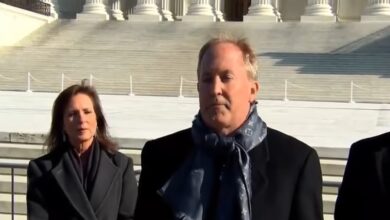Pro-life supporters and abortion opponents have reason to be optimistic
As thousands of pro-life demonstrators fill the streets of downtown Washington on January 24 for the annual March for Life, optimism and uncertainty will both be present in abundance. Forty-seven years after the Supreme Court legalized abortion and 28 years after it ruled against placing what it called an “undue burden” upon women seeking to terminate their pregnancies, the pro-life movement has reason for being both hopeful and concerned.
On the plus side, the number of U.S. abortions continues to drop, falling to 862,000 in 2017. This is still a shockingly high number, but it is half a million fewer than the 1.36 million 20 years earlier — and the figure has declined steadily throughout those two decades. Meanwhile, abortion clinics continue to close their doors as many states enact new, restrictive laws on abortion.
Things are looking up, too, at the Supreme Court, which at last has what appears to be a five-member majority of pro-life members — Chief Justice John Roberts and Justices Clarence Thomas, Samuel Alito, Neil Gorsuch, and Brett Kavanaugh. Firmly on the abortion side is a four-member minority composed of Justices Ruth Bader Ginsburg, Stephen Breyer, Sonia Sotomayor, and Elena Kagan.
But just how solid is the majority? The answer to that all-important question should become clear in the months immediately ahead. And there the uncertainty sets in.
On March 4 the Supreme court will hear oral arguments in June Medical Services v. Gee, a case testing a Louisiana law that requires clinic doctors who do abortions to have admitting privileges at nearby hospitals. (June Medical Services is an abortion provider, joined in the case by two anonymous doctors who perform abortions, while Gee is Dr. Rebekah Gee, secretary of the state’s health and hospitals department.)
As the media never tire of pointing out, the Louisiana law is virtually identical to a Texas law that the Supreme Court struck down in 2016. In upholding Louisiana’s version, however, the U.S. Court of Appeals for the 5th Circuit discerned “stark differences” between the factual records in the two cases. The appeals court also spoke approvingly of the “credentialing” function served by requiring hospital admitting privileges and thereby helping to ensure that women receive medical competent care.
At this point in the history of the abortion debate there is little or no chance that the Supreme Court will flatly overturn its existing precedents, and attempts to force it to do that by passing laws certain to be struck down arguably do more harm than good by reinforcing the precedents. Instead — and at most — the court will strengthen the authority of the states to impose some restrictions on abortion. This in turn will lead to fresh political struggles in many places, very likely punctuated by recurring appeals to the Supreme Court.
And here the real significance of this year’s March for Life becomes apparent. For if, as seems likely though far from certain abortion is on its way to becoming a question that each state will have to answer for itself, the ability of the grassroots pro-life movement to touch minds and hearts — not just of politicians and judges but of ordinary Americans — will soon be tested as perhaps never before.
–Russell Shaw | aleteia.org
The offer of a new life to begin a new year







